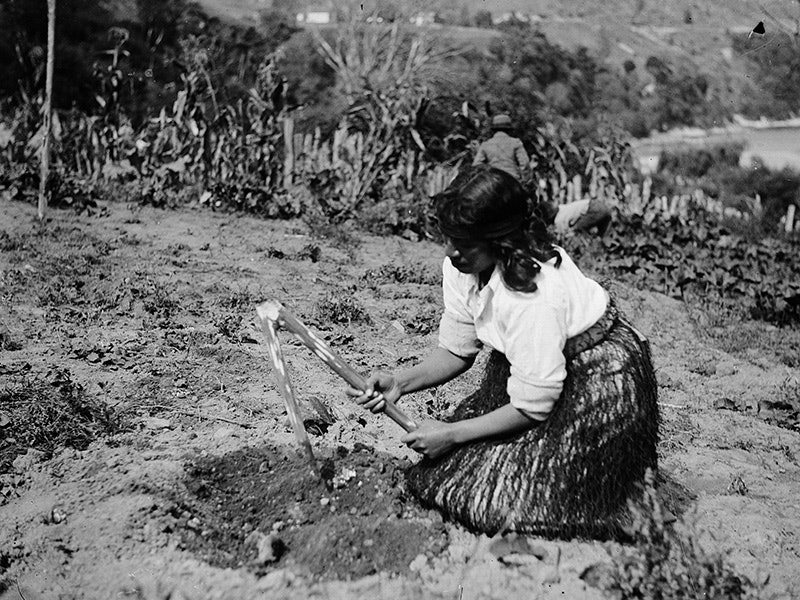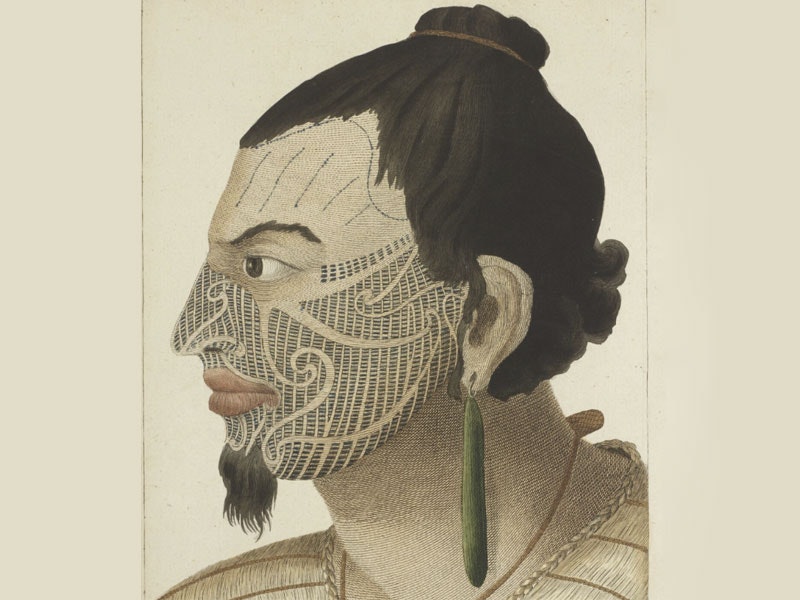
Māori gardening tools
Traditionally, Māori were essentially an agricultural people, with a large portion of their time and attention being given to cultivation.
Free museum entry for New Zealanders and people living in New Zealand
Open every day 10am-6pm
(except Christmas Day)
Free museum entry for New Zealanders and people living in New Zealand
Read about different taonga puoro and discover what their original purposes were.
Taonga puoro are undergoing something of a revival and were originally used for many purposes including:
as a call to arms in warfare
as a signalling device
to warn of imminent danger
to sound the dawning of a new day
to communicate with Māori gods
to signify the planting of certain crops at different times of the year.
Pūtatara (shell trumpet), 1800–1900, Whanganui, maker unknown. Te Papa (ME003937)
The sound of the pūtātara heralds arrivals to a marae or the birth of a child. It is also used to summon people for formal learning or as a call to arms.
Pūtātara are highly prized. The triton shell is rarely found in Aotearoa, only occasionally washing up on beaches in the Far North. It is regarded as a special gift of Tangaroa, the god of the sea.
Pūkāea (long trumpet), 1750–1850, maker unknown. Bequest of Kenneth Athol Webster, 1971. Te Papa (WE001090)
The pūkāea is used to welcome people and announce events or occasions of importance, and was also a war trumpet.
Pūkāea vary considerably in length, with some known to be over two metres long. The mouthpiece end is the kōngutu. The bell-shaped end is called the whara.
Karanga weka (small instrument, similar to a nguru), 1997, by Clem Mellish. Gift of the artist, 1997. Te Papa (ME015898)
This instrument was used to mimic the call of the weka.
Māori have many instruments for imitating bird calls – leaves and grasses, tubular plant stems, hollow stones, and pounamu.
Pūtōrino (bugle flute), 1997, by Bernard Makoare. Gift of Bernard Makoare, 1997. Te Papa (ME015912)
The pūtōrino (bugle flute) is shaped like the cocoon of the case moth (tūngou ngou). It is said to possess both female and male ‘voices’. Some instruments emit a third voice, said to be a wairua voice.
Pūtōrino are made from split and hollowed hardwood, sealed together with natural gums and bound by fine split vines.
Kōauau (flute), early 19th century, maker unknown. Oldman Collection. Gift of the New Zealand Government, 1992. Te Papa (OL000035)
Hine Raukatauri is the spiritual entity for Māori flutes. She is a daughter of Tānemahuta. The sound is an attempt to replicate the sound made by the empty cocoon of the case moth.
Hue (calabash), 1800-1900, maker unknown. Bequest of Kenneth Athol Webster, 1971. Te Papa (WE000901)
Hine Pū te Hue is the spiritual entity for the hue. She is associated with calming storms, and the sounds created from the hue are soothing and peaceful, like the spirit of Hine Pū te Hue – a daughter of Tānemahuta (god of the forests and birds).
The hue is a marrow-like vegetable that was brought to Aotearoa and cultivated by Māori. Dried and hollowed gourds were used as containers for water and preserved food. Smaller ones were used as containers for perfume. Taonga puoro were also made from hue, including the hue puruhau (pictured), kōauau pongaihu, poi āwhiowhio or ‘whistling gourd’, and hue puruwai.
Watch: Richard Nunns play the pūtōrino

Traditionally, Māori were essentially an agricultural people, with a large portion of their time and attention being given to cultivation.

Discover the history and practice of tāmoko, and find out why the lines of a moko carved in skin represent much more than a tattoo.